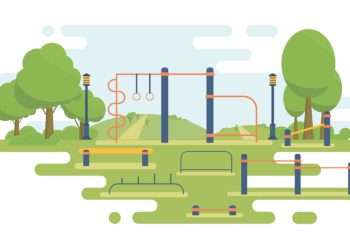In layman’s terms, “dead spots” are locations on a sports floor where ball rebound is markedly less than on the majority of the rest of the surface.
Many flooring systems exhibit vibrations and sound variations when you bounce a basketball at different locations. Often, areas where you observe vibrations and sound variations are mistakenly termed “dead spots.” If the ball rebounds to a reasonably consistent height in comparison to other locations on the floor, areas where vibrations and sound variations are present do not typically qualify as true “dead spots.”
Concerns about “dead spots” are most often expressed with floating subfloor configurations. Floating floors often exhibit sound and vibration variations due to the structure of the subfloor components. Seasonal changes in flooring moisture contents and resulting system expansion/contraction can affect ball rebound on all subfloor configurations. It is not uncommon for a true “dead spot” to move or disappear as a flooring system adjusts to varying seasonal moisture conditions, regardless of the subfloor system installed in the facility.
How to Confirm the a True “Dead Spot”
MFMA uses PUR Standards for measuring ball rebound.
PUR Standards use a concrete floor as a base measurement for rebound performance and compares rebound on all engineered surfaces as a percentage relative to results on concrete. Specialized equipment times impact intervals of a ball dropped at multiple locations across an athletic surface. Calculations using these impact figures result in a composite score for the floor. It’s key to examine variations from the composite figure to determine the presence of any true “dead spots.”
On a permanent PUR Compliant basketball floor, the ball’s rebound must maintain a 93% minimum average. A portable PUR Compliant basketball floor must maintain a 95 percent minimum average. The uniformity requirement of the MFMA PUR Standards is what makes it the North American standard for sports floors. MFMA recognizes the importance of a sports surface’s uniformity and consistent game play for a high-quality floor. Permanent and portable PUR Compliant basketball floors must be within +/- 3 percent of the minimum average.
One Last Thing
It is also important to remember maple sports flooring systems typically settle into their environments over time, including repair areas. Assuming proper and consistent environmental conditions are maintained over the long-term, the greatest dimensional changes in most sports flooring systems occurs during the first 12- 24 months of the floor’s life span. As the floor ages, expansion and contraction cycles become much less pronounced provided environmental conditions remain consistent from year to year. Avoid significant swings in indoor relative humidity. Maintain temperature and humidity levels within specified ranges year-round to minimize movement.
For more information on recommended environmental conditions, PUR Standards or our third-party inspection services, please visit maplefloor.org.
Daniel Heney is the executive director at Maple Flooring Manufactures Association. Reach him at 888.480.9138 or dheney@maplefloor.org.











Use of low-quality flooring material to cover the basketball court is solely responsible for the development of dead spot which has a significant influence on the result of a game. So, a person should be very careful while selecting the basketball/gym flooring material. Assistance from experienced professionals is really essential to deal with dead spots on the basketball court. Information given in this blog is really useful to select the best alternative flooring material for the gym floor.
Drake,
You are partially correct. Low-quality flooring materials can effect performance of a basketball court. As far a “solely responsible”, well that just isn’t true. Dead spots can be caused by several things like an low spot in a concrete slab, moisture incursion, improper installation of both maple and synthetic floors. The point of this article is to inform facility personnel that sound is not an indication of a dead spot. Poor ball rebound is. That is why it is important to select the best material available, northern hard maple and the best sport floor systems like those available from MFMA members.